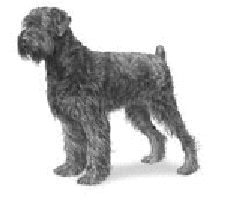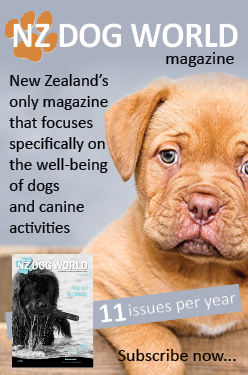Black Russian Terrier
General Information - Black Russian Terrier

Group:
Utility
Size:
Large
Lifespan:
9-11 years
Exercise:
High
Grooming:
Medium
Trainability:
Medium
Watchdog Ability:
Very high
Protection Ability:
High
Area of Origin:
Russia
Date of Origin:
1900s
Other Names:
Tchiorny Terrier
Original Function:
Draft
History
The Black Russian Terrier, also known as the Tchiorny Terrier (tchiorny is Russian for black), is a relatively new breed. In the forties, the army-controlled kennel "Red Star" began to breed a dog for their own needs, using a program developed by Soviet breeder-specialists. The ideal dog was to be one who was a massive, robust, high-spirited all-round dog, always willing to work, and able to withstand the wide climatic differences in the country. The major ancestry began with Giant Schnauzers, Airedale Terriers, and Rottweilers. Other breeds were added as needed to achieve specific requirements, with character and temperament being at the top of the list. Several years later, Russian "DOSAAF" Breeders (DOSAAF is a paramilitary organisation) took on the task of standardising the look of the breed without neglecting the good qualities. In May 1984, the breed was recognised by the FCI with Standard #327, the "Black Russian Terrier". They are weatherproof, rescue, working, and family dogs.
Temperament
Black Russian Terriers are courageous, suspicious of strangers, persistent, brave, and self-confident. They are an universal working dog with a natural controllable sharpness and protective instinct without undue aggression. The pups are generally easy to train, but may be somewhat stubborn, so persistence and firmness is required. Their protective instincts will begin to show at around 18-24 months when they will want to protect everything: this is not a dog for a first-time dog owner; it is a dog for the experienced dog person. This dog must live with its family and not in a kennel; and once its instincts and energies are properly channeled, it will be a truly loyal family dog.
Upkeep
This dog enjoys the outdoors, especially in cold weather. It needs daily exercise, either a good hike or a walk on leash. Although it can physically live outdoors in temperate to cold climates, it is so in tune with its human family that it cannot be relegated to life alone in the yard. Inside, it needs plenty of room to stretch out. Its coat needs brushing one or two times weekly. It very rarely sheds, but needs clipping regularly.








